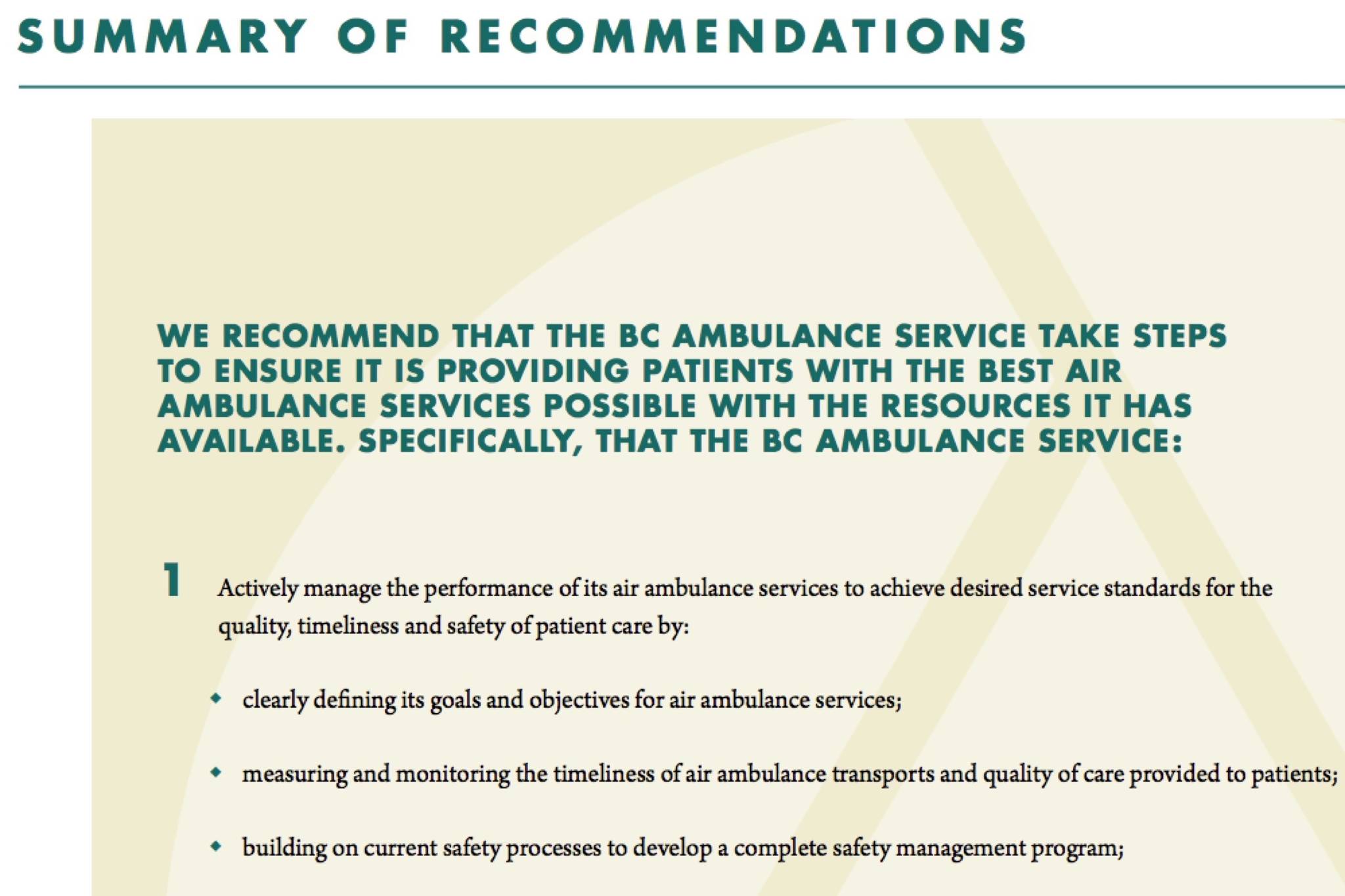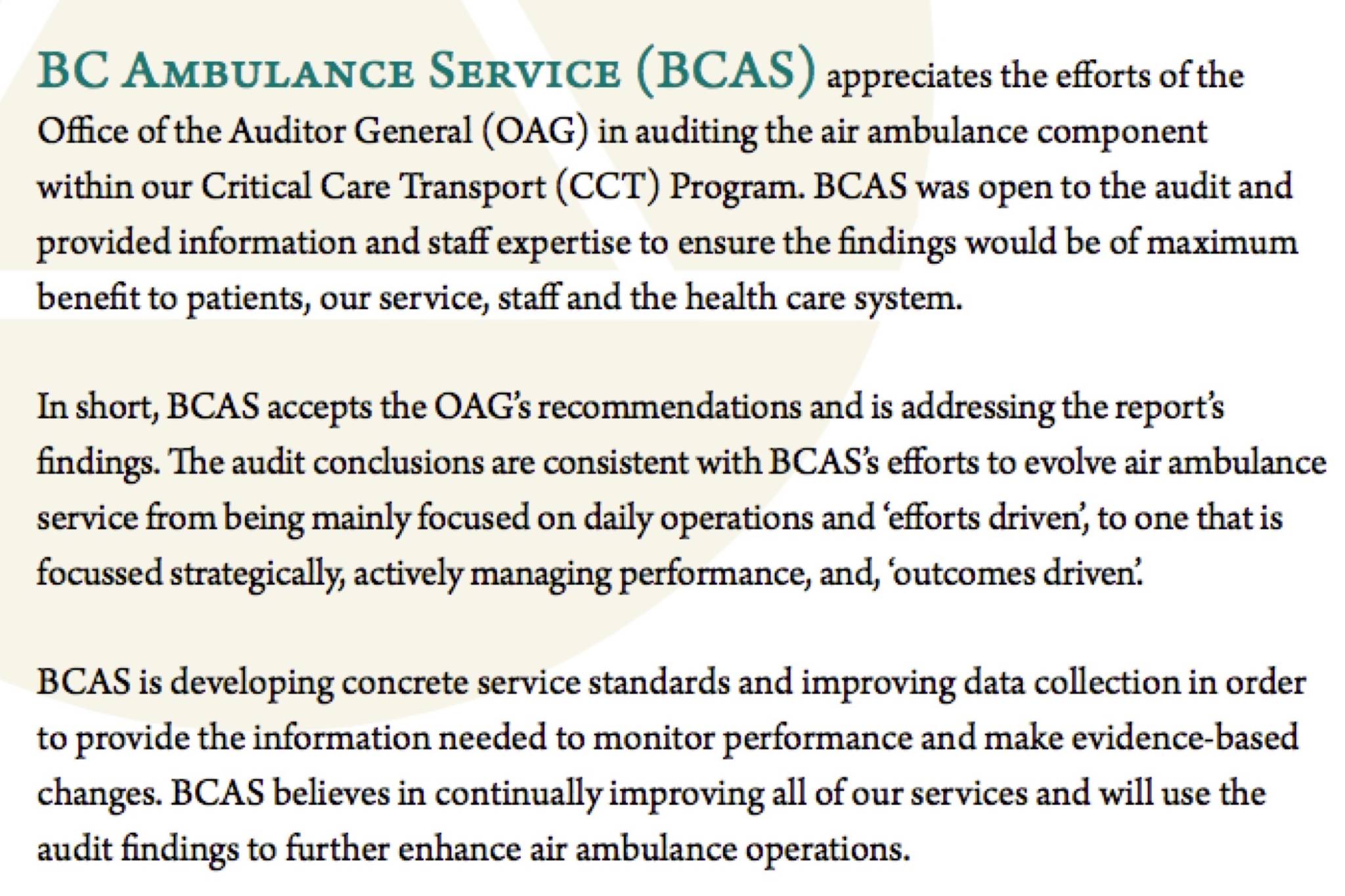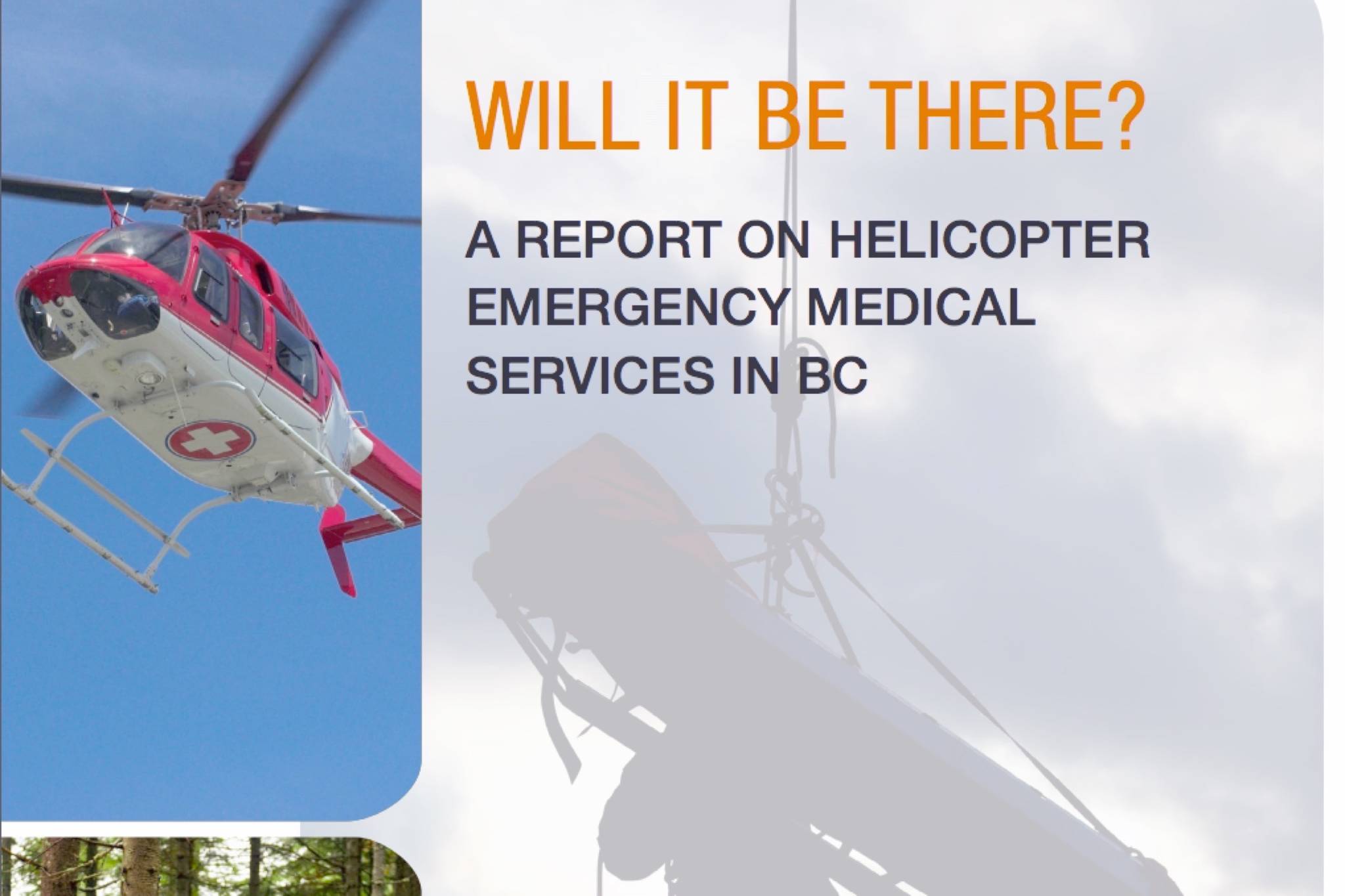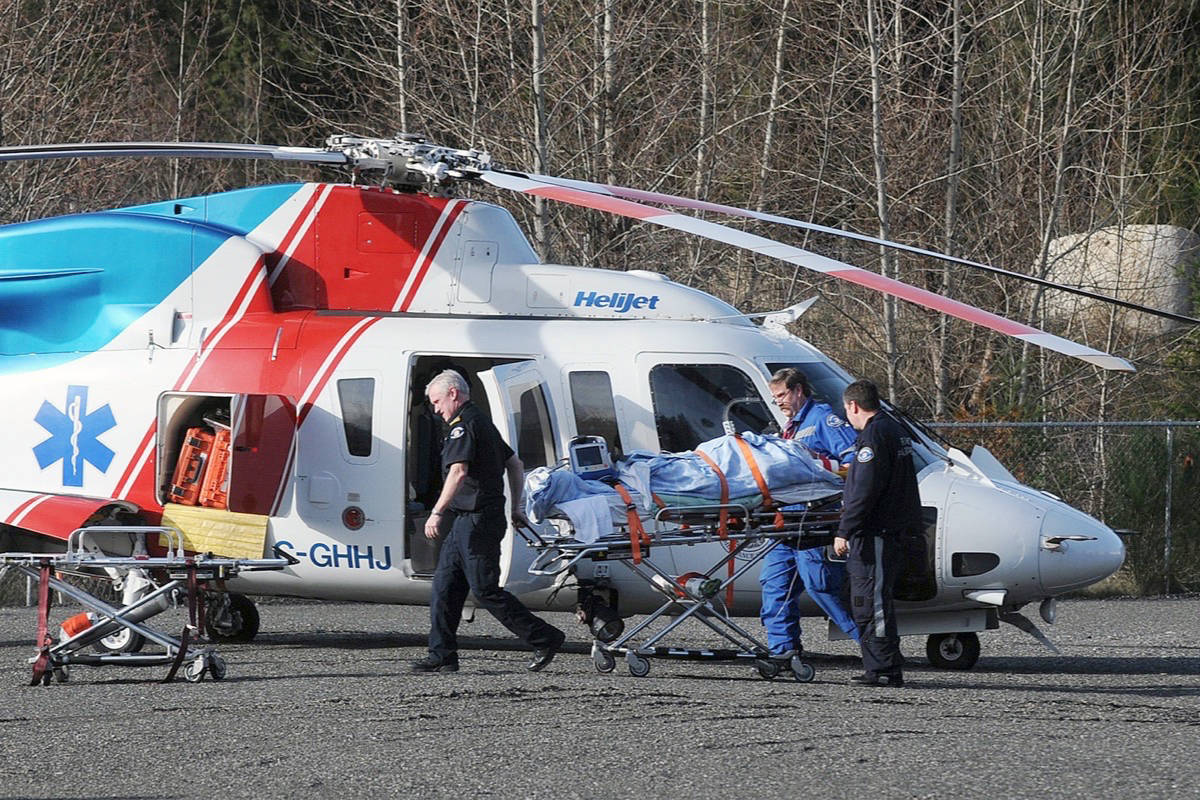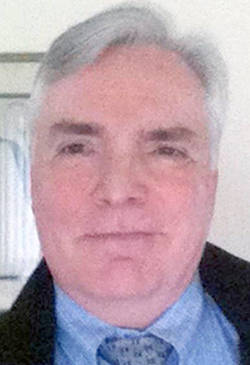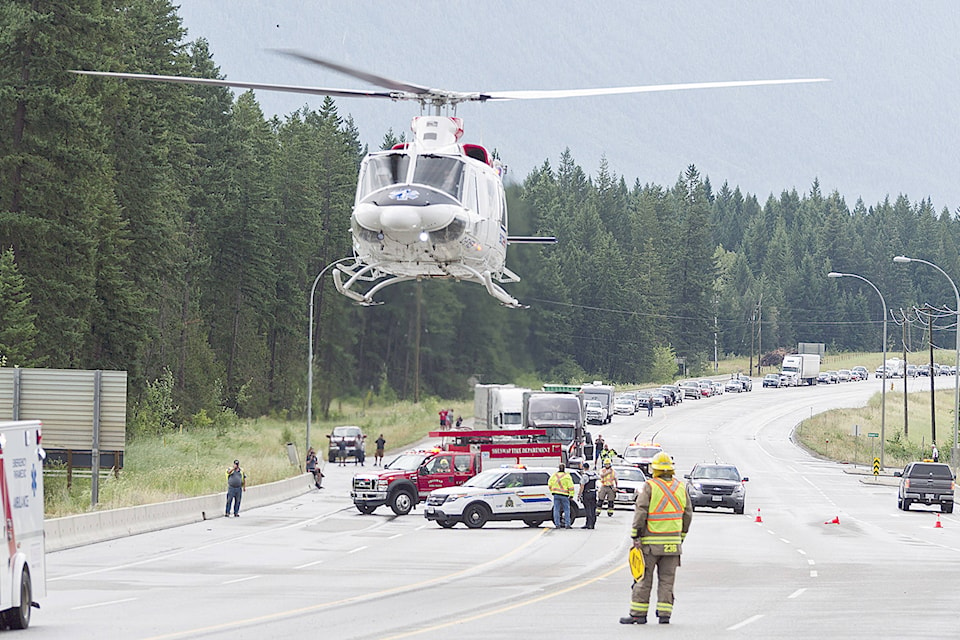Second in a series looking at serious issues with emergency health services in British Columbia. Castlegar News reporters Betsy Kline and Chelsea Novak and editor John White have been looking into the state of ambulance services both locally and across the province for the last two months.
This week we look at the rural/urban divide and reports critical of the British Columbia Ambulance Service policies. Future stories look at financial implications and reactions from officials.
If you have a story to share with us about your experiences, send an email to newsroom@castlegarnews.com.
CASTLEGAR, B.C. — Among those who have been critical of ambulance services in the province are the B.C Auditor General and the B.C. Forest Safety Ombudsman.
They have published reports that are critical of the British Columbia Ambulance Service (BCAS) — the branch of the British Columbia Emergency Health Services (BCEHS) in charge of pre-hospital care.
The reports express concerns on a range of topics ranging from a lack of accountability, lack of focus on patient outcomes, not properly utilizing air ambulances and creating a rural/urban service divide.
The Auditor General of BC is working on the second audit of BCEHS that will try to determine whether BCEHS has effectively managed access to ambulance and emergency health services across the province.
Auditor General air ambulance report
BCEHS has a fleet of four air ambulance helicopters, six air ambulance vehicles and one dedicated plane in Fort St. John. They also utilize other air carriers to provide charter aircraft as needed. About 7,000 patients are transported by air ambulance each year.
The small air fleet is stationed in larger population centres — a decision that critics say furthers the lack of health services to those living in rural communities.
Two helicopters and three fixed-wing aircraft are located at Vancouver International Airport. Prince Rupert has one helicopter, Kamloops Airport has one helicopter, Kelowna has two planes and Prince George has one plane. One more plane is stationed at Fort St. John as part of a pilot project.
In 2013, B.C. Auditor General John Doyle produced a report on the BC Ambulance Service’s (BCAS) air ambulance program.
The report titled “” came down harshly on the ambulance service saying: “The BC Ambulance Service could be doing more to ensure that its air ambulance services deliver timely, quality and safe patient care.”
“Air ambulance services have a direct impact on peoples’ lives,” said Doyle in the report. “We expected to find that the BC Ambulance Service was defining, monitoring and improving standards for its air ambulance service, but that was not the case.”
The report stated the ambulance service had not defined objectives or tracked its performance and that it lacked a performance-based approach for managing its air ambulance services. It does not “assess its own performance to find out how well it is doing and look for ways to improve. Further, it has not undertaken an overall assessment of service demands to ensure that paramedics and aircraft are located and dispatched to best meet patient needs,” the report stated.
The report recommends that in order to know “that it is providing the best air ambulance services possible with available resources, and to improve accountability for its performance, the BC Ambulance Service needs to fully evolve into an organization that focuses on patient outcomes.”
BCAS accepted the recommendations in the report, but focusing on patient outcomes is one of the things that Hans Dysarsz, executive director of the emergency medical care advocacy group BC HEROS (BC Helicopter Emergency Rescue Operations Society) says the service is still not doing.
“What we have is a perceived — and I stress the word perceived — lowest-cost-per-patient transported ambulance service, we do not have anything even remotely close to a best-possible-patient-outcome system,” said Dysarsz.
BC HEROS is running an campaign on change.org asking citizens to join with them in demanding better pre-hospital care for the province.
Forest Safety Report
BCEHS states that their goal is to provide the best possible care to patients no matter where they are in B.C., using the closest, most appropriate, available resource.
But a 2017 report prepared by the BC Forest Safety Ombudsman Roger Harris contradicts that statement stating that there is a rural/urban divide resulting in a lack of services provided to rural B.C.
The report titled “” states: “The findings of this report clearly indicate that there are serious gaps in the provision of emergency medical transportation services to people living and working in rural parts of the province.”
“The availability and level of emergency medical services in B.C. is distinctly split down urban and rural lines.”
One of the problems according to the report is that BCAS already realizes there is a discrepancy but sees it as something that rural residents just have to accept.
The report states, “A number of people interviewed with the BC Ambulance Service (BCAS) and BC Emergency Health Services (BCEHS) for this report suggested that if you lived or worked in remote parts of the province, you had ‘made a choice’ and could not expect to have the same level of service that you would receive in a larger urban centre. It is not surprising that rural services lag those in the urban centres when those responsible for providing a provincial service have already conceded this point.”
The report criticizes the fact that BCAS has concentrated its assets and full-time trained personnel in larger urban centres.
“While it may be accepted that rural communities cannot support the same level of medical facilities as those found in large urban centres, it is not acceptable that they should also lack an equal level of emergency medical transportation services … In fact, as the distance to the nearest medical facility increases, access to HEMS [Helicopter Emergency Medical Services] in rural and remote communities should be enhanced, not reduced.”
The report includes statistics to back up its claims: ̨��MM������ three-quarters of all people who die of trauma-related conditions in Northern B.C. do so before they can be brought to a hospital, 82 per cent in Northwestern B.C., compared to only 12 per cent in Metro Vancouver.
The source information for those numbers also shows that in the BC Interior the pre-hospital trauma death rate was 59 per cent.
The report goes on to challenge the current procedures for dispatch decisions.
“While the current protocols for dispatch seem to work in more populated, urban areas with medical facilities close by; in remote regions where distances are greater, weather, communications and infrastructure less predictable, it may make sense to add other factors — such as comfort of the patient, time, location, proximity to medical facilities — on an equal footing with severity into the protocol mix when considering whether to dispatch air or land-based transportation to an accident site.”
The report also points out that a lot of high-risk occupations are located in rural parts of the province and that a lot of the province’s wealth comes from those rural and remote regions.
To counter the argument that the lower call volumes in rural regions don’t justify the allocation of resources, report author Harris states, “When all factors are considered, HEMS may, in fact, be more cost effective than ambulances in the total overall cost to the health care system when you factor in patient outcomes to the equation ; and second, if you apply the logic of using low call volumes as a determinant of allocating emergency medical resources to an area, then conceivably a community with little or no crime or fire could find themselves without those services as well. It simply is not a reasonable argument to make.”
The report continues, “There are no technical, or infrastructure barriers to the delivery of helicopter emergency medical services within that critical first hour to each and every resident of BC, regardless of where they live. The decision by the government not to provide those services is a choice.”
The report concludes by making several recommendations including that B.C. considers mandating — through legislation or policy — guaranteed timelines for the public to be able to access Trauma 3 level care, similar to other jurisdictions and that it undertakes a review of the effectiveness of the legislation as it pertains to the provincial emergency ambulance service stating that, “The BCAS was originally established in 1974. A lot has changed since then.”
Harris reports that other jurisdictions, with a similar geography to B.C. have done just that — mandate emergency response times that are far superior to those here. Washington State ensures that 99 per cent of their population is within a 60-minute response time to a Level 3 trauma centre.
Most people who live outside of B.C.’s major population centres have no hope of reaching a trauma centre in an hour. When travelling by ground ambulance over mountains and winding roads — especially in winter — one is lucky to get to a local health centre in an hour. For serious trauma, this is then followed up by a second transport to a larger centre where equipment and specialists are available.
This problem is compounded by the fact that so few ground ambulances are stationed in rural areas. If the one ambulance stationed in town is already out on another call, the patient then has to wait for that call to be finished, or for an ambulance to come from a neighbouring community.
In addition, many rural ambulance stations are not staffed 24/7. Ambulance attendants and paramedics are on call — meaning they have to drive from wherever they are when the call comes in just to get to the ambulance station.
“Rural communities currently are impacted twice in reduced access to medical care and reduced access to emergency medical transportation,” said Harris in the report.
BCEHS told the Castlegar News that it is “updating our deployment model and resources across the provinces to ensure patients receive the care they need as soon as possible. Some of the updates include improved clinical oversight, a community paramedicine program, an additional air ambulance, and hiring and retaining more paramedics in rural and remote areas.”
Since 2016 BCEHS has been working on what they call their “Action Plan” but the implementation of those actions is rolling out slowly and in a recent interview with Castlegar News BCEHS West Kootenay representative Joe Puskaric acknowledged that it may be several more years before things change in the region.
The BCEHS Action Plan will be explored further later in the Critical Condition series.
